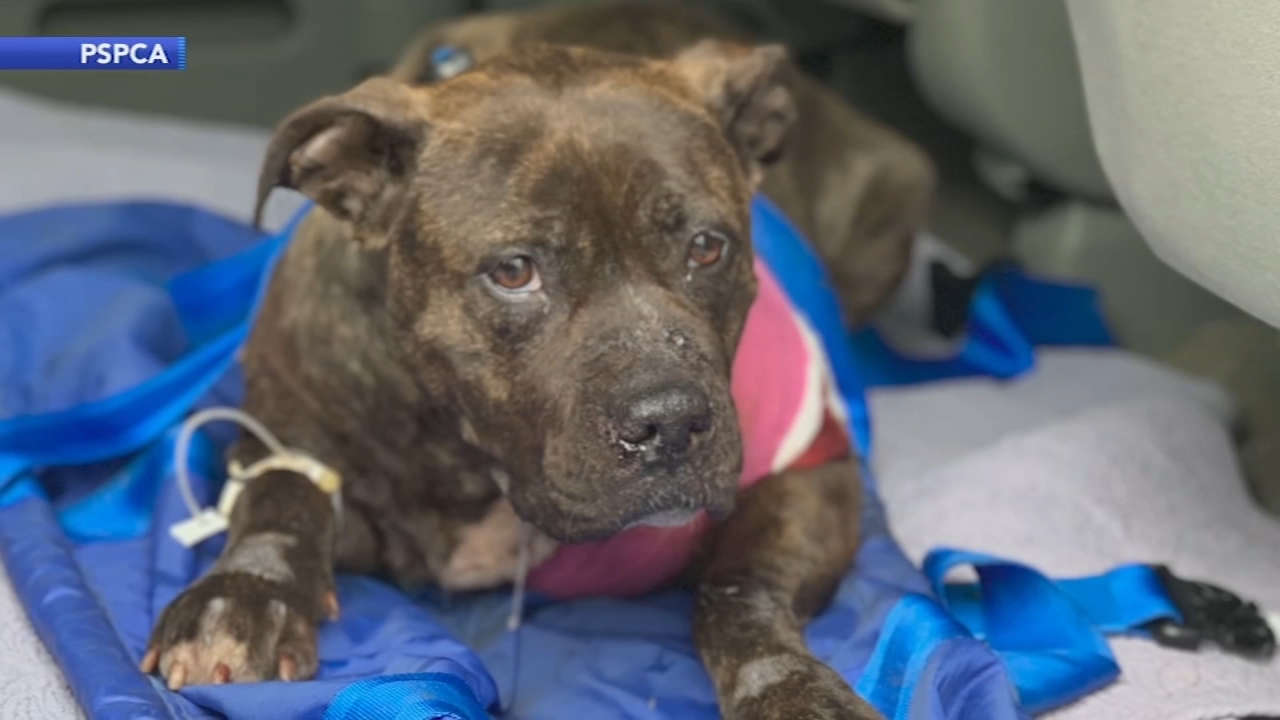
Blue is the kind of buddy everyone needs.
When two intruders barged into Nina Teller and Leroy Buchanan’s home in West Philadelphia in February, their brave dog did what he could to defend them.
“I told Blue to get after the guy,” Buchanan told Penn Vet, the veterinary school that cared for the dog, of the terrifying moments in his kitchen. “He locked onto the guy’s leg and that’s when he fired his gun.”
Both of the men ran off that day, but not before wounding the dog.
“It was pretty scary and I was shaken up,” Teller said. “But I was worried about Blue. He was bleeding a lot. We were scared for him.”
The pit bull, whose story was shared on the veterinary school’s website, was taken to Ryan Hospital’s Emergency Service for treatment and seemed stable, at first.
“My first instinct was that the shoulder wound was an entry and the sternum was the exit wound,” said Erica Reineke, associate professor of emergency and critical care. “We knew the wounds were close to his thorax or in his thorax, and he had some air under his skin. So the first thing I was concerned about was thoracic trauma and bleeding from the bullet.”
When Blue began having difficultly breathing, air in his chest cavity became a concern. They inserted a needle into his chest to remove air, a procedure called “tapping.”
“At that point, Blue initially stabilized,” said Reineke. “But his condition rapidly declined, so we started tapping his right side. Suddenly he decompensated from a respiratory standpoint and turned very gray. We weren’t getting negative pressure, and the air just kept coming through his chest.”
Once they were able to stabilize him, Blue went into surgery, where surgeons removed a lung lobe punctured by a bullet.
“This was a relatively manageable issue to deal with,” said lead surgeon Dr. Brian Brophy. “Removing that portion of the lung will not compromise Blue’s long-term function. And the damage was in line with the trajectory of the wounds.”
Believe it or not, the resilient pooch was up and moving 24 hours after the hour-long procedure, Penn Vet said, and the Charitable Pet Care Fund helped pay for his expensive care.
“We’re incredibly thankful,” said Teller. “We really didn’t have that kind of money.”
Sally Powell, director of operations for Ryan Hospital, was pleased the hospital could help this loyal friend.
“Blue was shot trying to protect his family during a home invasion,” said Powell. “Our Charitable Care program allowed this ‘hero dog’ to return to a family that loves him dearly and is forever grateful for his protection.”
